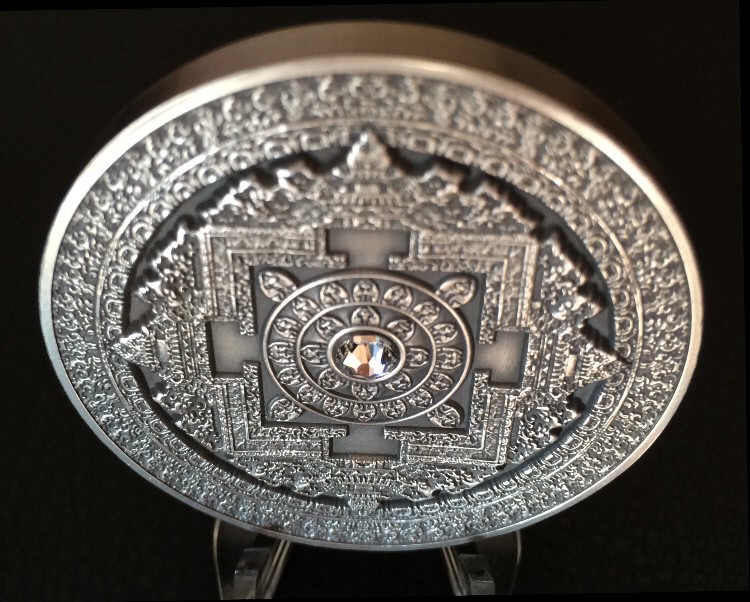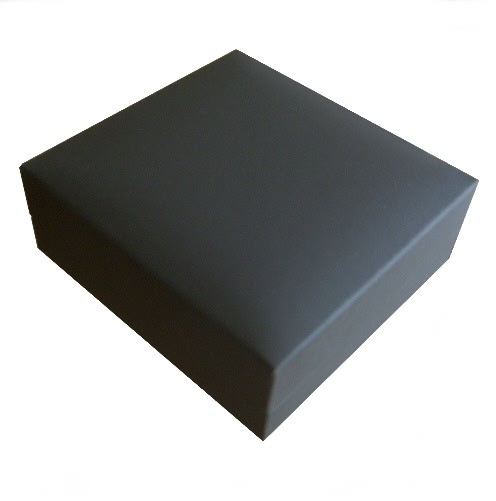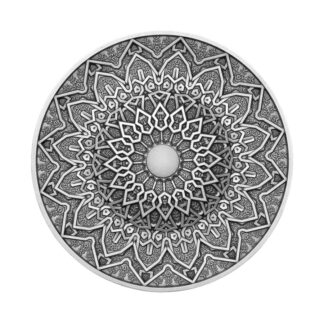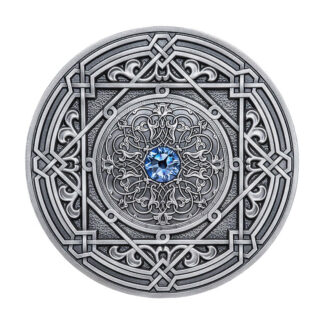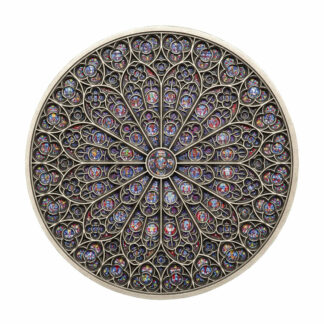Description
KALACHAKRA
The Kalachakra Mandala is a circle which is a device for the Buddhist
Tantric meditation. It is a visual aid for concentration and introversive
meditation leading to the attainment of insights and to activation of forces
culminating in “Siddhi” supernatural forces. The Mandala is the graphic
representation of this process.
The illustration represents “palace of purity” a magic sphere cleared of
spiritual obstacles and unpurified. The square of the “Sacred palace” proper
is end used in multiple circles of flame, Vajra, eight centuries (appears
only in wrathful deities) lotus, then the inner square to reach to the deity
of the Mandala “Shakyamuni Buddha” represented for the crystal.
MANDALA ART
What is a Mandala?
The meaning of mandala comes from Sanskrit meaning “circle.” It appears in
the Rig Veda as the name of the sections of the work, but is also used in
many other civilizations, religions and philosophies. Even though it may be
dominated by squares or triangles, a mandala has a concentric structure.
Mandalas offer balancing visual elements, symbolizing unity and harmony. The
meanings of individual mandalas is usually different and unique to each
mandala.
The mandala pattern is used in many traditions. In the Americas, Indians
have created medicine wheels and sand mandalas. The circular Aztec calendar
was both a timekeeping device and a religious expression of ancient Aztecs.
In Asia, the Taoist “yin-yang” symbol represents opposition as well as
interdependence. Tibetan mandalas are often highly intricate illustrations
of religious significance that are used for meditation. From Buddhist stupas
to Muslim mosques and Christian cathedrals, the principle of a structure
built around a center is a common theme in architecture.
In common use, mandala has become a generic term for any diagram, chart or
geometric pattern that represents the cosmos metaphysically or symbolically;
a microcosm of the universe.
Representing the universe itself, a mandala is both the microcosm and the
macrocosm, and we are all part of its intricate design. The mandala is more
than an image seen with our eyes; it is an actual moment in time. It can be
can be used as a vehicle to explore art, science, religion and life itself.
Carl Jung said that a mandala symbolizes “a safe refuge of inner
reconciliation and wholeness.” It is “a synthesis of distinctive elements in
a unified scheme representing the basic nature of existence.”



